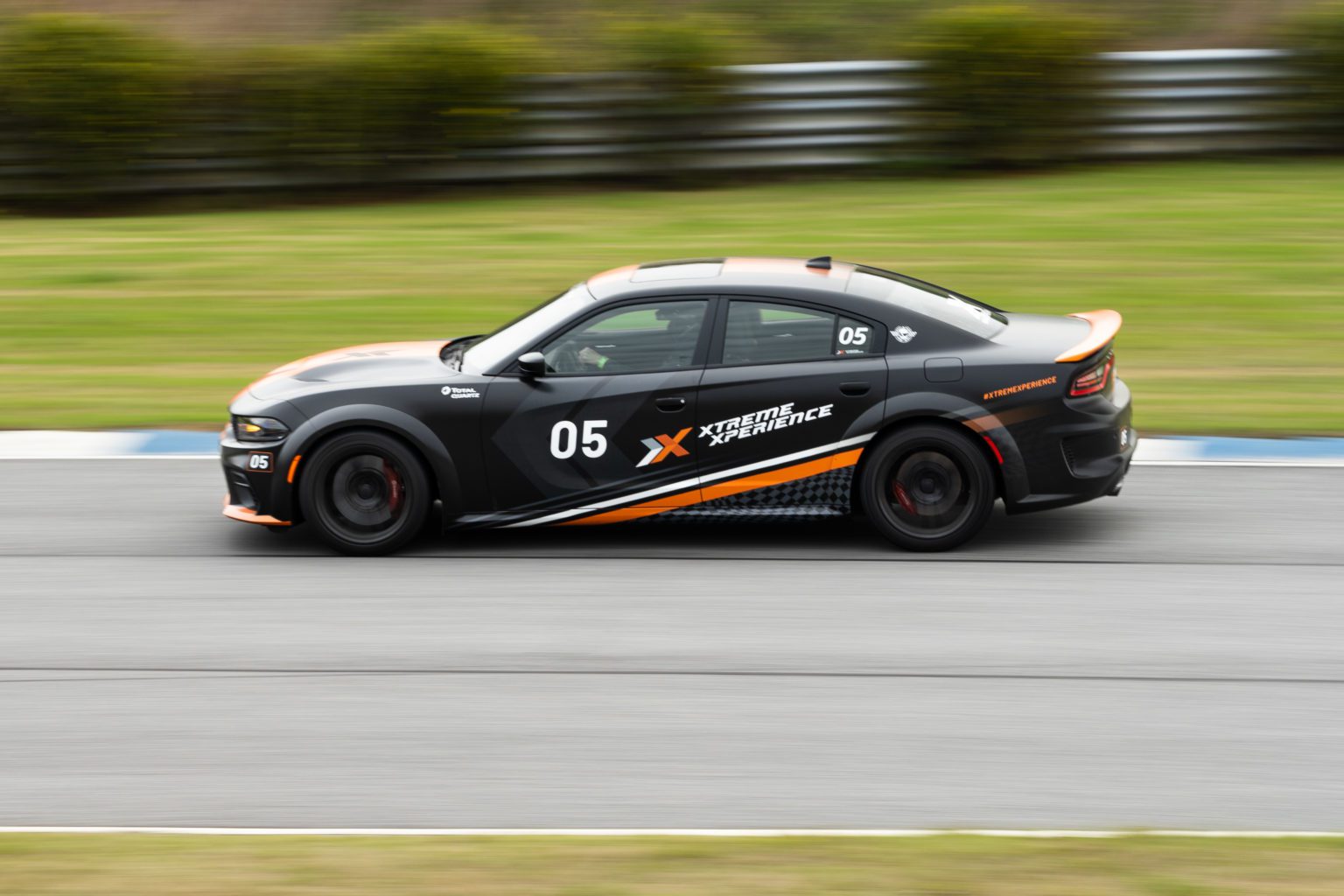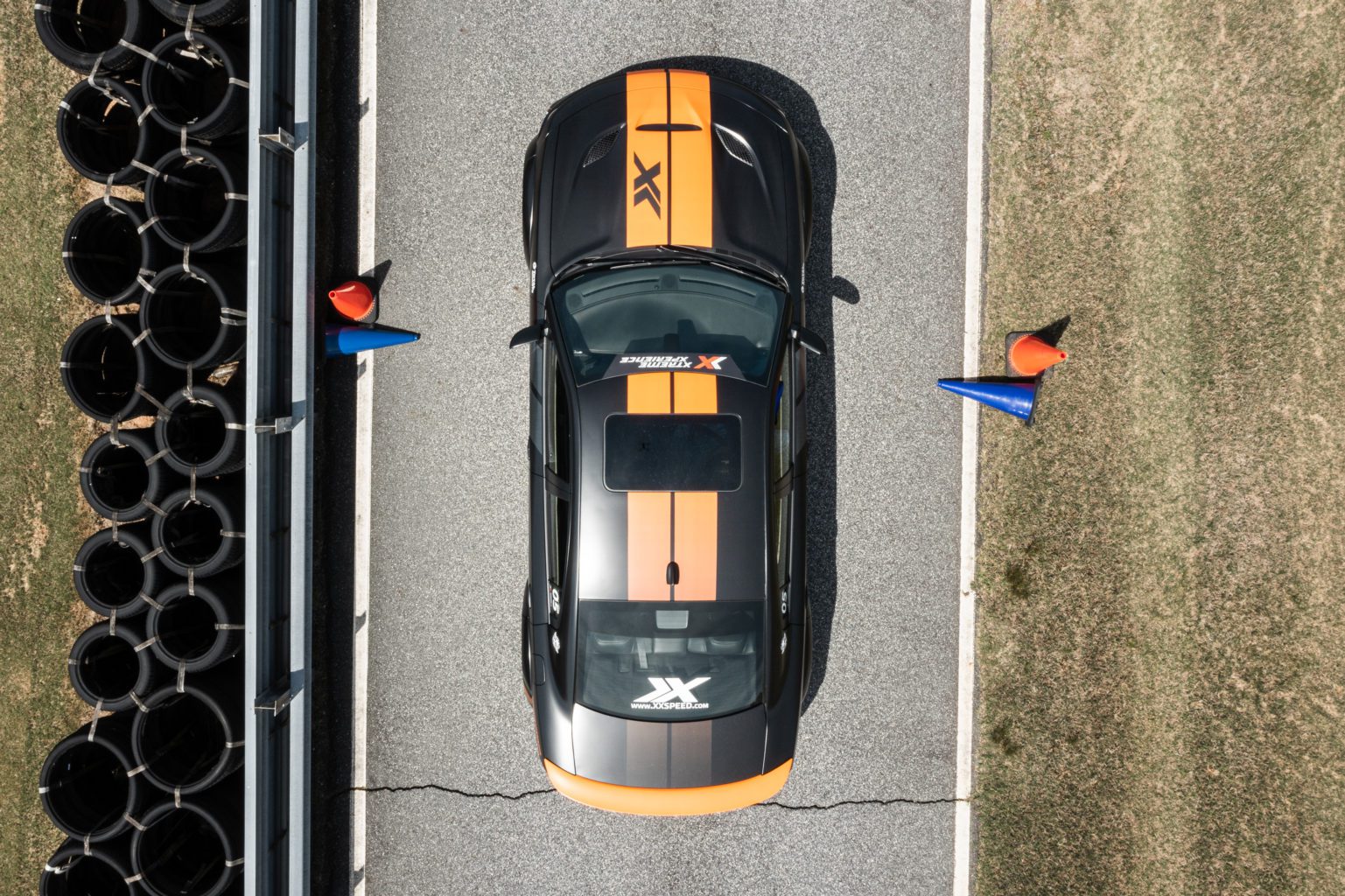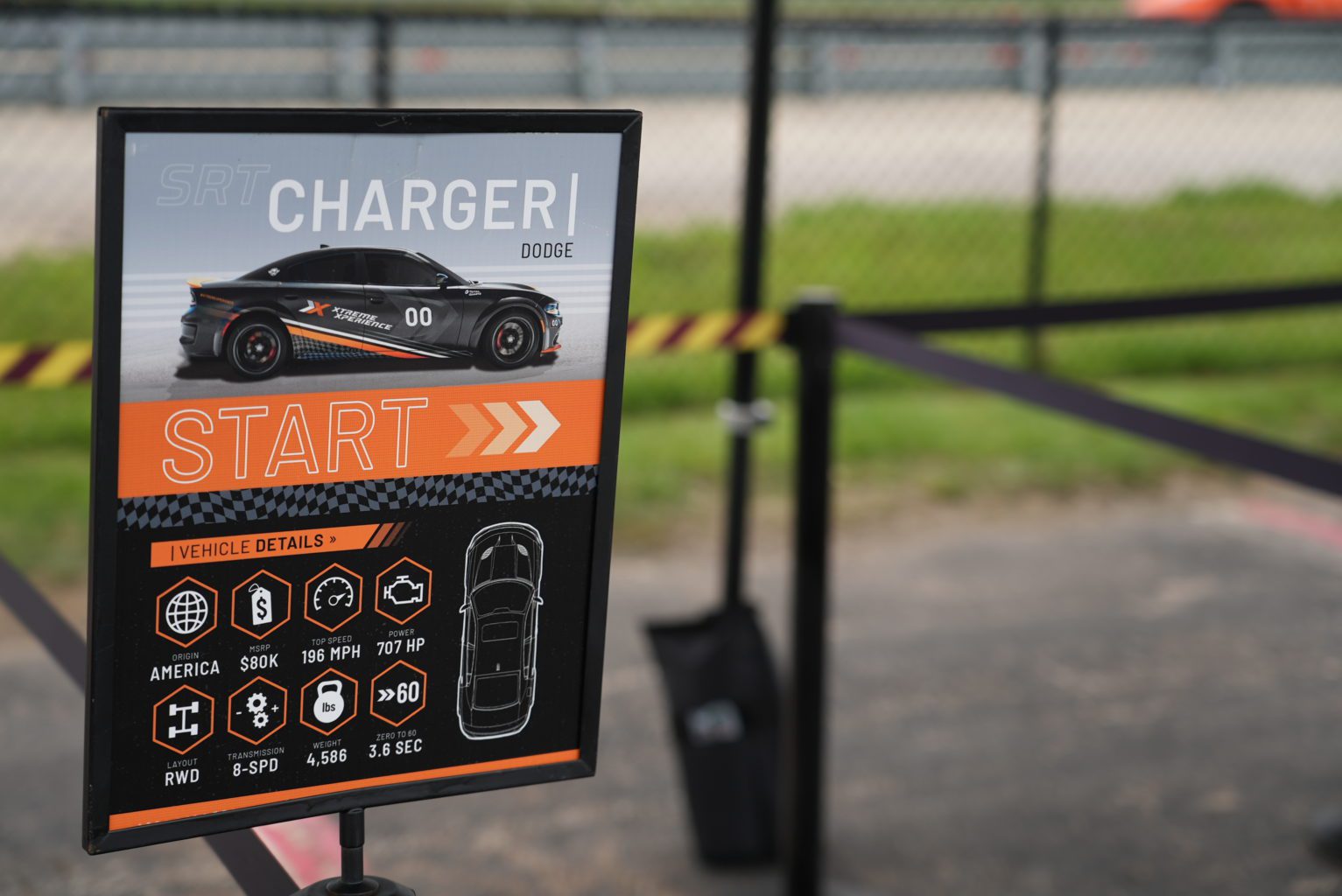It’s easy to take the insanity of the Dodge Charger Hellcat for granted.
After all, with over 700 horsepower cranking through the rear wheels and a massive supercharged V8 under the hood, this thing is the definition of a monster. Yet, you see them all over the roads of America, driven by people just like you and me.
We know these things are fast, 0 to 60 comes in well under 4 seconds and they can do almost 200 miles an hour. However, with all that speed, just how durable is the Dodge Charger Hellcat?
Well, after over 128,000 miles, and many drive shafts and axles later, we are here to give you the skinny on what’s gone right and what’s gone wrong with our fleet of Dodge Charger Hellcats.

We Go Hard On Charger Hellcats
Since we’re in the unique position of running a fleet of insanely fast cars around race tracks all over the country, and the Dodge Charger Hellcat happens to be our lead car; we’ve got a front-row seat that few car magazines or Charger owners will ever get to see.
First off, there’s no doubt that Dodge designed the Hellcat to rip around race tracks. It’s easy to dismiss it as a drag strip queen, but in the right hands, the Hellcat is formidable around any circuit. Yes, even circuits with corners!
Over the course of owning our fleet of Dodge Charger Hellcats, we’ve piled on around 12,000 miles of hard track abuse on each vehicle. Now, that may not sound like much, but these are not street miles that are driven on basic roads and highways. No, these are track miles driven at the limits of adhesion and at speeds that are well above anything legal on public roads.
These things regularly outrun supercars that are built and designed to be on a track, and yet our Dodge chargers don’t just rip around the track: they carry people. People who willingly enter the back seat of a 700 horsepower plus sedan driven by a professional race car driver. People who can’t wipe the smile off their faces as they witness a pro driver put a collar on the Hellcat and tame it. How many people? How about over 70,000.
How Durable Are Hellcats?
We brought Hellcats into our fleet because Chevrolet, inexplicably, decided to phase out the awesome SS sedan. We needed something that could carry people with ease and would be fast and impressive on a racetrack. If you know anything about the car industry, that leaves precious few options.
According to our technicians, the most commonly replaced items on our Dodge Charger Hellcat fleet vehicles are:
- Differential units
- Axles (lots of axles)
- Control arms
- Sway bar bushings
- Driveshafts
- Exhaust pipes
- Tie rod replacements
- Brake calipers
Maybe it’s something to do with that lunk of a supercharged HEMI cranking out over 700 horsepower, or maybe it’s just how hard our drivers beat up on the Hellcats, but these things break axles all the time. Yes, the Dodge Charger Hellcat eats axles for breakfast, lunch, and dinner like nothing else we’ve ever run. This got to be a bit of a challenge for us because supply chain constraints often made it hard to get the parts we needed for our Hellcats.
This is despite having a much more durable axle, along with other driveline components, than any standard charger could ever dream of. We chalk this axle-eating behavior up to the fact that the Hellcats are pushed harder than any vehicle in our fleet by our instructors, with the goal of thrilling those who are riding the back seat. Also, that 700-plus horsepower engine just rips on anything and everything in the driveline.
We also go through a lot of rotors, a lot of pads, and even some brake calipers. This is no doubt due to the prodigious weight of the Dodge Charger Hellcat along with the fact that our instructors are beating up on it every single session. Remember, this is not a lightweight sports car, it is a full-size sedan with a gigantic rear seat, and at 4586 pounds, it’s no flyweight.
Overall, with the amount these things get pushed on the track, they are by far one of the most reliable vehicles in our fleet.

We’ve Learned a Ton
Most automotive publications or YouTube vehicle reviewers only get to live with the charger for a few days before they need to write a comprehensive review of the vehicle. At Xtreme Xperience, we go way beyond anything that a typical publication would be able to test and we’ve learned a ton.
The real way to drive a Dodge Charger Hellcat is to drive the snot out of it. This is not a vehicle that is set up to handle delicately, or particularly precisely. You have to grab it by the scruff of the neck and rely on the 700 plus horsepower engine to shoot you from corner to corner. Simply put, as good as the handling is for a full-size American sedan, this is no supercar around the corners, but it’s faster than most supercars on the straights.
If you’re going to drive a Hellcat for maximum fun and speed around the circuit, you simply can’t be afraid of the power plant. As soon as you get straight, your foot needs to go to the floor so you can let that huge engine push you and those massive brakes haul you down at the end of the straightaway.
Driving it like a typical supercar or sports car will get you a lot of slides and a lot of tail-out antics that look awesome for bystanders but do absolutely nothing to get you around the track faster. To be clear here, we’re not complaining and neither are the people who ride in the back but if your goal is short lap times, this herculean vehicle needs to be driven in a particular manner.
We also want to point out that the skill of our drivers makes up a lot of ground when it comes time to push this thing around the track. Could the average person equal lap times done by our instructors? No way. You have to learn and adapt to pushing the Hellcat, and our team of racing instructors knows how to do exactly that.
They’re a BLAST
Although you may see Dodge Charger Hellcats rolling down the street in your local hometown, don’t take them for granted because they may not be around for long.
To say that this vehicle is a dying breed is an understatement. Not only does it pack in an SRT massaged V8, but it also happens to be a sedan and a full-size sedan at that. This type of vehicle used to be extremely popular in America, but it’s been replaced by Sport Utility Vehicles as the de facto family machine.
SRT did an incredible job with a Hellcat, and that’s not just on paper, but in real life. With all the abuse that our team of instructors puts on these things on a weekly basis, the fact that it only breaks a few axles, diffs, and a few suspension pieces is a testament it’s just how well-engineered this thing is.
Sure, the motor is an old-school design and yes, it drinks fuel like a drunken sailor but that’s not the point of this machine. The Hellcat is designed to be an escapist vehicle in a world that seems to be moving towards blandness at an alarming rate. It’s an antidote to boring, and we appreciate it more every time it bellows down the straightaway at an event.
Think you’re ready to tame the wildness that is the Dodge Charger Hellcat? You can experience this incredible machine behind the wheel at one of our legendary Open Road events, or you can ride in the backseat at one of our road circuits events at a track near you. No matter which you choose, you will not be disappointed when you feel the rush of 700 plus horsepower and the all-American torque of the wailing supercharged monster under the hood.
So, what are you waiting for? The Dodge Charger Hellcat is waiting for you.




